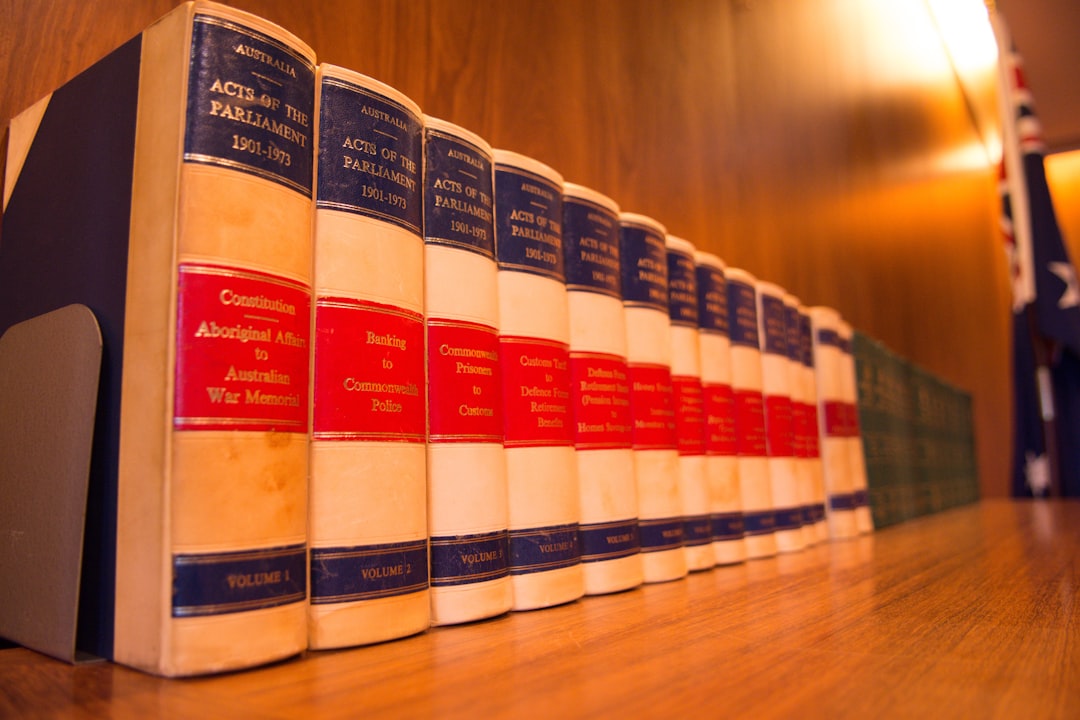

Engage prospects with a scan and streamline customer engagement with FREE QR code marketing tools by Sona – no strings attached!
Create a Free QR CodeFree consultation

No commitment

Engage prospects with a scan and streamline customer engagement with FREE QR code marketing tools by Sona – no strings attached!
Create a Free QR CodeFree consultation

No commitment
In today’s digitally driven world, QR codes have evolved from a novelty to a strategic tool for intellectual property law firms. They bridge offline engagement with online action across conferences, printed materials, and client interactions. With a single scan, prospective clients can book consultations, download service briefs, or submit initial inquiries without downloading an app or typing a URL.
This shift matters because the moments that indicate real intent often happen away from your website. People pick up your brochure, chat at your booth, or collect a business card. Without a quick digital path, those signals never reach your CRM. QR codes remove friction and make interest measurable, so your team can act quickly and intelligently.
By operationalizing QR code workflows, IP firms can tighten attribution, elevate lead quality, and speed up time to engagement. The result is a connected experience for prospects and a clearer view of which campaigns and touchpoints generate real demand. For campaign ideas and examples, see qr codes in marketing.

QR codes are uniquely positioned to drive lead generation for intellectual property law firms because they strip away the friction that often plagues paper-based processes. Traditional tools such as business cards, printed forms, and sign-up sheets rarely sync to your CRM and generally fail to distinguish warm interest from casual curiosity. When those materials are replaced with QR-enabled experiences, every interaction can be captured, routed, and measured in real time.
Start by examining where leads currently drop off. Do they take a brochure from your booth and never reach out, or attend a seminar and fail to fill a feedback card, or call the front desk without leaving a callback number? QR codes convert these analog touchpoints into tracked interactions. Scans can drive visitors to digital intake forms, appointment schedulers, attorney bios, and resource libraries, while instantly logging engagement in your marketing systems. For example, route prospects to Google Forms to streamline intake.
A centralized platform like Sona QR can standardize this across your firm. One patent-focused firm, for example, replaced printed intake forms with QR-driven onboarding at events and in-office signage. The change reduced errors, increased completion rates, and surfaced timely intent to the marketing and business development teams. When the scan is the first touch, your firm can follow up quickly instead of waiting for forms to trickle in.

IP law firms face a persistent challenge: how to turn real-world engagement into timely, attributable digital action. Prospects will often attend a conference session, pick up a brochure, or speak with an attorney in person, but never email or call later. Without QR codes, those moments rarely become measurable interactions, let alone tracked leads, as shown in this academic analysis. QR codes give that engagement a digital endpoint, helping you move prospects from awareness to consultation.
Another reason QR codes matter is speed. If an executive hears an interesting case study or sees your practice specialties on a booth panel, there is a short window where their intent is high. A visible QR code on signage or a handout lets them act immediately. That single scan creates a contact record, triggers a follow-up, and enables you to attribute downstream outcomes to the source.
Use cases such as post-event follow-ups, brochure-to-download journeys, and virtual consultation scheduling benefit most from QR-driven workflows. Prospects enjoy the convenience and your team gains the visibility necessary to act on genuine intent.

Selecting the right QR code format ensures your experiences match the user’s intent. For IP firms, the goal is typically to capture demand, accelerate consultation requests, and document interest in a way that is easy for busy professionals to complete. The following formats cover most needs and can be managed centrally through a platform designed for dynamic updates and analytics.
Dynamic codes are the default for most marketing use cases because they let you adjust destinations and CTAs without reprinting. Static codes have limited use, such as linking to a permanent asset like a compliance document that never changes. For lead capture, dynamic codes with tracking and CRM integrations are essential.
Dynamic QR codes layer in analytics, access control, and change management. As your content and positioning evolve, you can test new offers and destinations without creating new print assets.

The most effective QR deployments meet prospects where they are already engaging. IP law marketing often spans conferences, partner events, university seminars, and print collateral. By placing scannable calls to action at these touchpoints, you can catch high-intent interest that would otherwise go unrecorded and unresponsive.
Focus on placements that often produce hidden engagement signals. An executive tucked your brochure into a laptop bag, or a startup founder paused at your booth to photograph a slide. Strategic QR placement turns those moments into measurable next steps.
These placements increase surface area for conversion and ensure that genuine interest does not slip through the cracks. When every physical asset becomes a digital onramp, your lead funnel grows and your attribution sharpens.

Many firms leave value on the table because early engagement signals never make it into the CRM. QR codes convert one-to-many outreach into measurable, one-to-one interactions that power faster follow-up and more relevant communications. The goal is to meet prospects at the moment of interest with a next step that fits their intent.
Start with three foundational use cases that map to common client behaviors. Each use case should clearly define the action you want, the asset it belongs on, and the primary outcome you will measure.
These applications create a transparent path from interest to action. As a result, your firm improves conversion rates, speeds up service readiness, and complies more confidently with documentation requirements.
Every scan is a signal. It captures context such as where the scan occurred, what content was requested, and how the visitor chose to engage next. When you deploy multiple QR codes across different assets, you effectively tag intent based on content and venue. That segmentation feeds your CRM and informs high-precision follow-up. For step-by-step tactics, see Sona’s Playbook on intent-driven retargeting.
To extract the most value, plan your code strategy to mirror your funnel: awareness, consideration, and conversion. Awareness codes drive to overviews or educational resources, consideration codes deliver deeper proof and calculators, and conversion codes point to booking or requests. As each code is scanned, contacts are automatically labeled by stage and interest area.
For IP firms, valuable distinctions include startup founders versus enterprise legal teams, inventors versus in-house counsel, and domestic matters versus international filings. Use scan tags to reflect these differences and you will prioritize better, personalize more effectively, and raise close rates.
Your prospects encounter your brand across many channels, and the path from intrigue to inquiry is rarely linear. QR codes connect offline and digital campaigns so you can deliver consistent experiences and track performance across the journey. With a centralized platform, marketing and business development gain the data needed to improve placements, offers, and timing.
Think of QR codes as connective tissue across the assets you already produce. By linking brochures to biographies, signage to booking pages, and direct mail to RSVP forms, you turn passive materials into measurable, active touchpoints.
When all scan data is centralized, you can see the full journey: a scan at a seminar, a follow-up download from a brochure, and an eventual consultation booking. The result is a connected pipeline from offline touch to online conversion.
A successful QR initiative follows a simple but rigorous process: define the use case, choose the format, craft and test the design, deploy where it counts most, and optimize with live insights. Below are the core steps your IP firm can use to launch and scale with confidence.
Start by identifying the moment where you lose the most potential value. Common pain points include missed follow-ups after conferences, low completion rates on paper intake forms, and unknown readers of printed brochures. Make the objective specific, such as “book 30 trademark consultations from next month’s IP conference” or “increase post-seminar report downloads by 40 percent.”
Align the QR code’s purpose with a direct business outcome. If your goal is pipeline creation, prioritize a booking or intake destination. If your goal is thought leadership reach, focus on high-value downloads paired with progressive profiling. Clarity on the outcome ensures that everything from CTA language to placement supports the result you want.
Static codes are generally sufficient for permanent documents that will never change. For campaigns, dynamic codes are strongly preferred because they allow you to swap destinations, add UTM parameters, and collect analytics without reprinting. Dynamic codes also make it easier to route scans by geography or persona, which is valuable for regional events or multi-practice firms.
Match the format to the action you want. Use a web link for bookings or downloads, a vCard for personal contact exchange at events, or SMS/email pre-fills when you want to prompt a fast, direct inquiry. If you are uncertain, start with dynamic web links so you can keep learning and iterating during the campaign.
A QR code is only as effective as its clarity and context. Design matters. Add your logo, brand colors, and a descriptive frame that tells people what they get by scanning, such as “Scan to schedule your IP consultation” or “Scan for our patent litigation benchmark.” Clear CTAs raise scan rates and minimize confusion. For creative ideas, explore how to integrate QR codes into your marketing.
Before deploying, test the code on multiple devices, in varied lighting, and at expected viewing distances. Print at adequate size, typically at least 1 inch by 1 inch for close viewing or larger for signage. Place the code where it is easy to see and scan without awkward angles. Accessibility considerations matter as well, so pair the code with a short vanity URL for those unable to scan.
Roll out your codes where the probability of missed engagement is highest. Conferences, seminars, and direct mail often produce interest that never reaches your CRM. Equip your booth staff, presenters, and partners with materials that invite scanning at the moment of curiosity.
For print ads and brochures, place codes near headlines and key takeaways. For events, add codes to speaker slides and session signage so attendees can respond during the session while interest is fresh. Remember that you can use multiple codes, each tailored to a different outcome such as booking, downloading, or subscribing.
Monitor scan volume daily during active campaigns and weekly afterward. Pair scan data with conversion metrics such as bookings completed, forms submitted, and meetings attended. Add UTM parameters to destinations so you can attribute website behavior and pipeline back to the exact code and placement. For choosing models, compare multi-touch attribution with single-touch approaches.
Run small tests. Adjust CTAs, creative frames, and landing page content based on what performs best. Share learnings with attorneys and business development teams so the on-the-ground script improves. Over time, build a library of proven placements and messages that reliably turn scans into pipeline.
Attribution is hard in professional services because key interactions happen offline. QR codes, paired with a modern analytics stack, solve this by tying scan events to downstream engagement and revenue. Without this linkage, teams see activity but cannot prove which materials or events created pipeline, making it difficult to optimize budget and messaging. For strategy, review Sona’s guide to offline attribution.
A robust QR platform captures the moment of scan, merges it with web analytics and CRM data, and visualizes the journey from first touch to signed engagement. This closed-loop view helps leaders shift resources to the channels that produce real outcomes rather than just impressions or clicks.
When scans are unified with broader journey data, marketing becomes more predictive and pipeline becomes more reliable. Your team can see which codes convert, which audiences are heating up, and which practice areas deserve added investment.
QR programs thrive when they become repeatable, measurable processes embedded in your team’s daily work. Aim for clarity of purpose, tight integrations, and a culture of testing. Build from a small set of high-impact use cases and then scale placements and audiences as your data matures.
Invest a little time training attorneys and coordinators. When staff can confidently explain the benefit of scanning and point prospects to the right code, adoption rises. Small shifts at events and in the office compound into higher scan rates and more booked meetings.
Creative deployment ideas for IP firms include QR codes on invention disclosure forms that link to confidentiality guidelines and scheduling, and QR codes on renewal invoices that open secure payment and renewal guidance. Both examples reduce friction and improve speed to resolution.
QR codes are accelerating the digital transformation of intellectual property law firms by turning offline engagement into measurable, attributable action. With one scan, prospects move from interest to interaction, and your team gains the data needed to personalize outreach and prove marketing impact. The more your firm connects brochures, signage, and events to digital destinations, the more consistent your client experience becomes.
By adopting a practical, analytics-first approach to QR deployment, your firm will capture demand at the source, elevate lead quality, and reduce delays in follow-up. The result is a connected pipeline that reflects true interest across practice areas, regions, and buyer roles. Start with your highest-value touchpoints, standardize your process, and iterate using real-time data. Start creating QR codes for free.
QR codes have transformed intellectual property law firms from traditional outreach methods into dynamic, measurable lead generation channels. Whether it’s capturing qualified leads, enhancing client engagement, or streamlining information sharing, QR codes replace cumbersome processes with instant, mobile-friendly actions that deliver real-time insights and elevate every marketing asset into a powerful conversion tool. Imagine knowing exactly which materials attract the most potential clients and being able to optimize your campaigns on the fly.
With Sona QR, your firm can effortlessly create dynamic, trackable QR codes in seconds, update campaigns instantly without costly reprints, and directly connect each scan to new business opportunities. No more guesswork—just smarter, more effective client acquisition and retention strategies. Start for free with Sona QR today and turn every scan into a valuable client connection or a closed case.
Intellectual property law firms offer services such as patent, trademark, and copyright consultations, case intake and qualification, patent litigation, and protection of intellectual property assets.
They help protect your business by providing legal advice on patents, trademarks, copyrights, managing IP disputes, and ensuring compliance to avoid infringement.
Legal requirements include ensuring that QR code content complies with business laws, privacy regulations, and accurately represents services without misleading clients.
Law firms can use QR codes to connect offline materials like brochures, business cards, and event signage to digital resources, enabling consultation bookings, downloads, and lead capture.
Avoid infringement by ensuring QR code content and linked materials respect existing IP rights, do not misuse logos without permission, and comply with trademark and copyright laws.
Using QR codes with company logos without proper authorization can lead to trademark infringement and legal liability, so it is important to secure rights and use logos correctly.
Choose a firm based on their expertise in your industry, proven success in IP protection and disputes, responsiveness, and ability to integrate technology like QR codes for efficient engagement.
Costs vary depending on services such as consultations, filings, enforcement, and dispute resolution, and firms may provide pricing details upon inquiry or consultation.
They assist by providing legal representation, managing litigation strategy, advising on enforcement, and helping resolve conflicts related to patent infringement.
Benefits include expert guidance on protecting innovations, navigating complex IP laws, managing patent portfolios, and leveraging technology like QR codes for client engagement and lead tracking.
Use Sona QR's trackable codes to improve customer acquisition and engagement today.
Create Your FREE Trackable QR Code in SecondsJoin results-focused teams combining Sona Platform automation with advanced Google Ads strategies to scale lead generation

Connect your existing CRM

Free Account Enrichment

No setup fees
No commitment required

Free consultation

Get a custom Google Ads roadmap for your business






Launch campaigns that generate qualified leads in 30 days or less.
